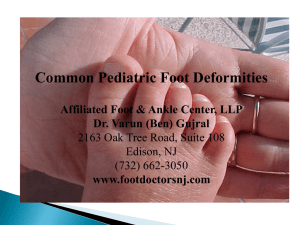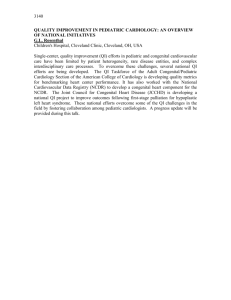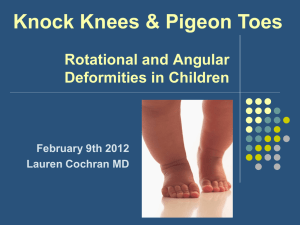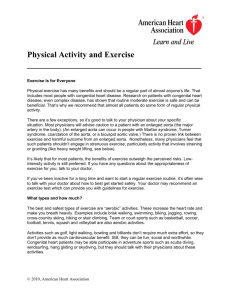Deformities
advertisement
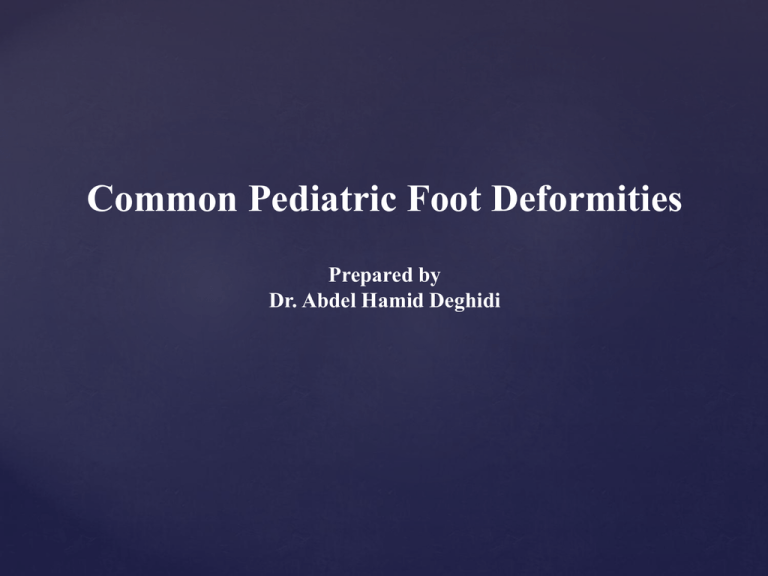
Common Pediatric Foot Deformities Prepared by Dr. Abdel Hamid Deghidi Anatomy/Terminology •3 main sections 1.Hindfoot – talus, calcaneus 2.Midfoot – navicular, cuboid, cuneiforms 3.Forefoot – metatarsals and phalanges Anatomy/Terminology • Important joints 1. tibiotalar (ankle) – plantar/dorsiflexion 2. talocalcaneal (subtalar) – inversion/eversion • Important tendons 1. achilles (post calcaneus) – plantar flexion 2. post fibular (navicular/cuneiform) – inversion 3. ant fibular (med cuneiform/1st met) – dorsiflexion 4. peroneus brevis (5th met) - eversion Anatomy/Terminology • Varus/Valgus Calcaneovalgus foot Calcaneovalgus foot • ankle joint dorsiflexed, subtalar joint everted • classic positional deformity • more common in 1st born, LGA, twins • 2-10% assoc b/w foot deformity and DDH • treatment requires stretching: plantarflex and invert foot • excellent prognosis Congenital Vertical Talus • true congenital deformity • 60% assoc w/ some neuro impairment • plantarflexed ankle, everted subtalar joint, stiff • requires surgical correction (casting is generally ineffective) Talipes Equinovarus (congenital clubfoot) A. General - complicated, multifactorial deformity of primarily genetic origin - 3 basic components (i) ankle joint plantarflexed/equines (ii) subtalar joint inverted/varus (iii) forefoot adducted Talipes Equinovarus (congenital clubfoot) Talipes Equinovarus (congenital clubfoot) B. Incidence - approx 1/1,000 live births - usually sporadic - bilateral deformities occur 50% C. Etiology - unknown - ?defect in development of talus leads to soft tissue changes in joints, or vice versa Talipes Equinovarus (congenital clubfoot) D. Diagnosis/Evaluation - distinguish mild/severe forms from other disease - AP/Lat standing or AP/stress dorsiflex lat films E. Treatment • Non-surgical - weekly serial manipulation and casting - must follow certain order of correction - success rate 15-80% • Surgical - majority do well; calf and foot is smaller Talipes Equinovarus (congenital clubfoot) Pes Planus (flatfoot) A. General - refers to loss of normal medial long. arch - usually caused by subtalar joint assuming an everted position while weight bearing - generally common in neonates/toddlers B. Evaluation - painful? - flexible? (hindfoot should invert/dorsiflex approx 10 degrees above neutral - arch develop with non-weight bearing pos? Pes Planus (flatfoot) Pes Planus (flatfoot) C. Treatment (i) Flexible/Asymptomatic - no further work up/treatment is necessary! - no studies show flex flatfoot has increased risk for pain as an adult (ii) rigid/painful - must r/o tarsal coalition – congenital fusion or failure of seg. b/w 2 or more tarsal bones - usually assoc with peroneal muscle spasm - need AP/lat weight bearing films of foot In-Toeing A. General - common finding in newborns and children - little evidence to show benefit from treatment In-Toeing B. Evaluation - family hx of rotational deformity? - pain? - height/weight normal? - limited hip abduct or leg length discrepancy? - neuro exam C. 3 main causes (i) metatarsus adductus (ii) internal tibial torsion (iii) excessive femoral anteversion In-Toeing (i) metatarsus adductus - General • normal hindfoot, medially deviated midfoot • diagnosis made if lateral aspect of foot has “C” shape, rather than straight In-Toeing (i) metatarsus adductus - Evaluation • should have normal ankle motion • assess flexibility by holding heel in neutral position, abducting forefoot In-Toeing (i) metatarsus adductus • treatment - if flexible, stretching; Q diaper change, 10 sec - if rigid, or if no resolution by 4-8 months, refer to ortho - prognosis is good: 85-90% resolve by 1yr In-Toeing (ii) Internal Tibial Torsion • usually presents by walking age • knee points forward, while feet point inward In-Toeing (ii) Internal Tibial Torsion • Treatment - reassurance! spontaneous resolution in 95% children, usually by 7-8yrs - controversy with splints, casts, surgery In-Toeing (iii) Excessive Femoral Anteversion • both knees and feet point inward • presents during early childhood (3-7yrs) • most common cause of in-toeing In-Toeing (iii) Excessive Femoral Anteversion • int rotation 70-80 deg ext rotation 10-30 deg • “W” position In-Toeing (iii) Excessive Femoral Anteversion • increase in internal rotation early with gradual decrease In-Toeing (iii) Excessive Femoral Anteversion • Treatment - no effective non-surgical treatment - surgical intervention usually indicated if persists after 8-10 yrs and is cosmetically unacceptable or functional gait problems - derotational osteotomy References • Hoffinger SA. Evaluation and Management of Pediatric Foot Deformities. Pediatric Clinics of North America. 1996. 43(5):1091-1111 • Yamamoto H. Nonsurgical treatment of congenital clubfoot with manipulation, cast, and modified Denis Browne splint. J Pediatric Ortho. 1998. 18(4): 538-42 • Sullivan JA. Pediatric flatfoot: evaluation and management. J Am Acad Orthop Surg 1999. 7(1): 44-53 • Dietz FR. Intoeing-Fact, Fiction and Opinion. American Family Physician. 1994. 50(6): 1249-1259 • Canale. Campbell’s Operative Orthopedics, 9th ed. 1998 1713-1735; 938-940
